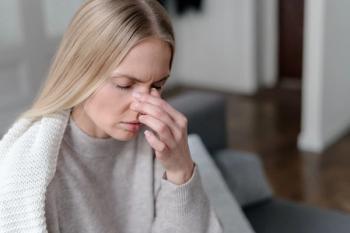
New FDA Guidance on Biosimilars: Another Step Forward A Payer Perspective
Specialty pharmaceuticals are currently the object of payer focus as one of the major drivers of increased pharmacy spending in 2014 and beyond.
Specialty pharmaceuticals are currently the object of payer focus as one of the major drivers of increased pharmacy spending in 2014 and beyond. According to Express Scripts, the 1% of patients who take specialty drugs now account for about 27% of the pharmacy budget.1 The recent launch of Sovaldi—Gilead’s new drug that treats hepatitis C virus (HCV)—along with its $1000 per pill price tag has received significant media attention. While the drug is highly effective for treating some forms of HCV with resultant cures for over 90% of patients, industry experts have pointed out that payers are in an uncomfortable position where there is a significant breakthrough in treatment, both in efficacy and tolerability, but this breakthrough carries a high cost. But Sovaldi is not the only expensive drug to come to market. Some recently launched cancer therapies also come with price tags that exceed $100,000 per year of therapy.
Due to the cost of these new agents, payers have increasingly become focused on actively managing the specialty drug spend. Clinical management programs now commonly include:
- Prior authorization of most specialty drugs
- Preferred therapies in selected classes (eg, growth hormone deficiency, inflammatory diseases, multiple sclerosis [MS])
- Quantity limits and first fill programs to manage waste
- New benefit designs to further promote the use of cost effective therapies
One essential feature of benefit design is the ability to encourage patients to use lower-cost alternatives to more expensive branded drugs. While this has worked well in the traditional drug sector, with generic dispensing rates at an all-time high, there have been few low-cost alternatives in the specialty sector. Biosimilars hold the promise of lower-cost therapeutically equivalent choices for some specialty agents. Additionally, these products have the potential to create competition in some therapeutic classes of specialty drugs. Autoimmune conditions, MS, and growth hormone deficiency are a few disease states for which biosimilars are likely to emerge first. Meanwhile, generic versions of a small number of specialty drugs (eg, Copaxone and Gleevec) are likely to emerge in 2014 and 2015. Payers are eagerly awaiting these developments as a next step to controlling growth in specialty drug spending.
As a critical step toward the emergence of biosimilars in the United States, the FDA published new draft guidance on May 13, 2014, outlining the requirements for developing biosimilar products. This guidance targeted clinical pharmacology parameters for biosimilar products. The guidance covers several issues, but focuses mainly on safety, immunogenicity, and the types of study designs that can be used to support a biosimilar application.
The new FDA guidance introduced a ranking system for similarity between a biosimilar and originator brand that is somewhat unique:
- Fingerprint-like similarity
- Highly similar
- Similar
- Not similar
These rankings will be determined by such things as the molecular weight of the protein, its higher order structure and posttranslational modifications, heterogeneity, functional properties, impurity profiles, and degradation profiles denoting stability.2
The degree of similarity will determine the extent to which further study is required. For those agents that will be considered “not similar,” the agency will not recommend further development through the biosimilar pathway unless modifications to the manufacturing process can be made. A “highly similar” or “fingerprint-like similarity” classification of the biosimilar is likely to require only targeted animal or human studies to resolve residual uncertainty and support biosimilarity.2
This publication, once finalized, will be the fifth publication by the FDA on biosimilars. In February 2012, the FDA released the first 3 draft guidance documents on biosimilar product development, followed by a fourth guidance document released in March 2013. The first 4 guidance documents provided relatively general principles concerning the biosimilars application process. The latest guidance document from FDA is the first to add a level of detail to the biosimilar approval process. In the future, guidance documents are expected on topics such as interchangeability, labeling, and exclusivity.3
However, there is still much work to be done by the FDA to clarify the pathway to biosimilars in the United States, and the multi-billion dollar biosimilar market remains on hold until there is additional FDA guidance. Until that happens, the date of arrival of biosimilars in the United States remains a significant question. While payers recognize the potential for biosimilars to save their customers significant cost, they are unable to effectively plan for the actuarial impact of these agents because of the unknown time horizons.
In the meantime, current biologic product manufacturers such as Amgen, Merck, and Biogen Idec are working with the FDA on approved copies of their own products, potentially adding further complexity to the murky future of biosimilars. Therefore, in the meantime, the need will continue for payers to develop clinical management and benefit design strategies to effectively manage the rapidly growing cost of specialty drugs.
REFERENCES
- Express Scripts Drug Trend Report 2013. Express Scripts website. http://lab.express-scripts.com/insights/specialty-medications; Accessed May 26, 2014.
- FDA issues draft guidance on biosimilars. Specialty Pharma Journal website. http://www.specialtypharmajournal.com/medical-news/business-news/5010-fda-issues-draft-guidance-on-biosimilars?utm_source=Payors&utm_campaign=e27c968bbd-5_75_7_2012&utm_medium=email&utm_term=0_745a5baed3-e27c968bbd-7589525; Published May 14, 2014. Accessed May 30, 2014.
- FDA’s fifth draft guidance on biosimilars sheds new light on approval pathway. Jones Day website. http://www.jonesday.com/fdas-fifth-draft-guidance-on-biosimilars-sheds-new-light-on-approval-pathway-05-27-2014/. Published May 2014. Accessed May 30, 2014.
Newsletter
Stay ahead of policy, cost, and value—subscribe to AJMC for expert insights at the intersection of clinical care and health economics.








